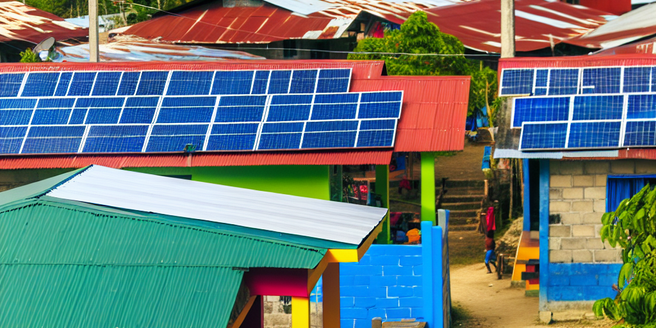
Introduction to Renewable Energy in Tropical Climates
Tropical regions, characterized by abundant sunshine and high rainfall, present unique opportunities and challenges for renewable energy implementation. Significant solar and wind energy potentials exist, yet energy access in these areas often remains limited due to infrastructural constraints. Renewables offer not just a solution to energy access but also a means to enhance climate resilience. Investing in renewable infrastructure can reduce dependency on fossil fuels and transform energy production. Government policies and community engagement play crucial roles in promoting the shift. Solar farms, micro-hydro projects, and wind turbines adapted to local conditions can power remote areas sustainably. As technology advances and costs decline, the integration of renewable systems in tropical climates becomes increasingly feasible, promising a greener future.
Types of Renewable Energy Suitable for Tropical Regions
Tropical regions are rich in natural resources like sunlight and wind, making them ideal for certain types of renewable energy systems. Solar energy is arguably the most suited option, with technologies like photovoltaic panels capable of harnessing the consistent daylight. Wind energy also holds great promise, especially in areas with steady trade winds. Biomass energy, derived from organic materials, can be sustainable if managed correctly. Small-scale hydroelectric systems can prosper in areas with plentiful rainfall and rivers. Each type of energy comes with considerations for location, infrastructure, and scalability. Combining different renewable sources could maximize output and reliability, allowing for a balanced and diversified energy grid that is less reliant on fossil fuels and better suited to the tropical climate’s inherent strengths.
Challenges in Implementing Renewable Systems in Tropics
Implementing renewable energy systems in tropical climates presents several challenges. High humidity and extreme weather conditions can affect the efficiency and longevity of solar panels and wind turbines. Infrastructure is often lacking, particularly in remote areas, complicating the deployment of large-scale projects. Financial constraints limit access to technology and investment, even as upfront costs of renewables continue to drop. Moreover, policy and regulatory frameworks in these regions may not be supportive or well-developed, posing additional hurdles. Social acceptance and awareness are vital for the successful integration of renewable technologies. In many cases, community engagement and education are needed to overcome resistance and misinformation. Addressing these challenges requires a collaborative effort between governments, communities, and private enterprises for sustainable development.
Case Studies of Successful Renewable Projects in Tropics
Numerous case studies highlight successful renewable energy projects in tropical regions. One example is the Azuri Technologies initiative in Kenya, where solar home systems have provided affordable energy access to thousands of households. In Costa Rica, the country has achieved over 99% electrification with a significant portion from renewable sources like hydroelectric, wind, and solar energy. The Philippines has emerged as a leader in Southeast Asia by promoting geothermal energy projects, utilizing its volcanic landscape. These case studies illustrate that with appropriate technology, policy support, and community involvement, renewable projects can thrive even in challenging environments. Learning from such examples can guide future efforts to expand clean energy access across tropical regions, demonstrating both sustainability and economic viability.
Technological Innovations for Tropical Renewable Systems
Technological advancements are playing a pivotal role in overcoming challenges faced by renewable systems in tropical climates. Innovations in solar technology, such as bifacial solar panels, capitalize on land and sunlight availability, increasing efficiency. Wind energy benefits from improved turbine designs suited to lower wind speeds typical in tropical areas. Energy storage solutions like advanced batteries or pumped hydro systems are gaining traction to tackle intermittency issues. Smart grid technologies enable better energy management, optimizing the distribution of renewable sources. Additionally, modular and mobile energy solutions provide flexibility in remote regions, making it easier to deploy and maintain infrastructure. These innovations promise to enhance the adoption of renewable energy in tropical climates, driving sustainability and boosting the region’s energy resilience.
Future Prospects and Potential Developments in Tropics
The future of renewable energy in tropical regions looks promising, with multiple developments on the horizon. As technology continues to evolve, costs for solar panels, wind turbines, and energy storage solutions are expected to further decrease, making renewables more accessible. Policy changes and international climate commitments could spur greater investment in sustainable infrastructure. The potential for hybrid systems—combining solar, wind, and biomass—offers a new frontier of reliable energy solutions tailored for tropical climates. Additionally, there is a growing movement towards community-owned energy projects, empowering local populations and creating sustainable economic opportunities. Efforts to digitize the energy grid could lead to smarter resource management and improved efficiency. By embracing these developments, tropical regions can play a crucial role in the global transition to a sustainable energy future.
